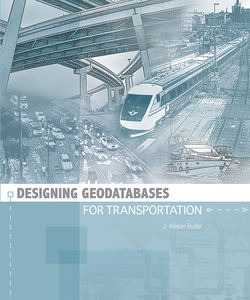Читать книгу Designing Geodatabases for Transportation - J. Allison Butler - Страница 9
Introduction
Оглавление• Building the agile geodatabase
Modes of travel can be quite different but all follow a conceptual structure consisting of an origin, a destination, a path between the two, and a conveyance to move along the path. Designing Geodatabases for Transportation tells how to design a geospatial information system to manage data about transportation facilities and services.
An enterprise geodatabase can help solve two common transportation challenges: the many origins, destinations, paths, and conveyances that may be present; and the need to specify locations along the facility. There is also the matter of facility suppliers usually being different from facility users. The facility user focuses on origins and destinations. The facility supplier is concerned about the many paths over which a conveyance travels and generally not about specific trips. A transportation agency provides the facilities to support travel. Shippers—those who have goods to deliver—define the origin and destination for their shipment. A shipping company supplies the conveyances and selects the paths to move the shipper’s goods from origin to destination. Each origin and destination must be accessible from a transport facility. A shipping company can select a path only where a corresponding facility exists. Railroads perhaps can be viewed as being both suppliers and users of transport capacity although some may operate over facilities they do not own.
